This 10-Minute Yoga Practice Will Build Strength in Your Body & Mind
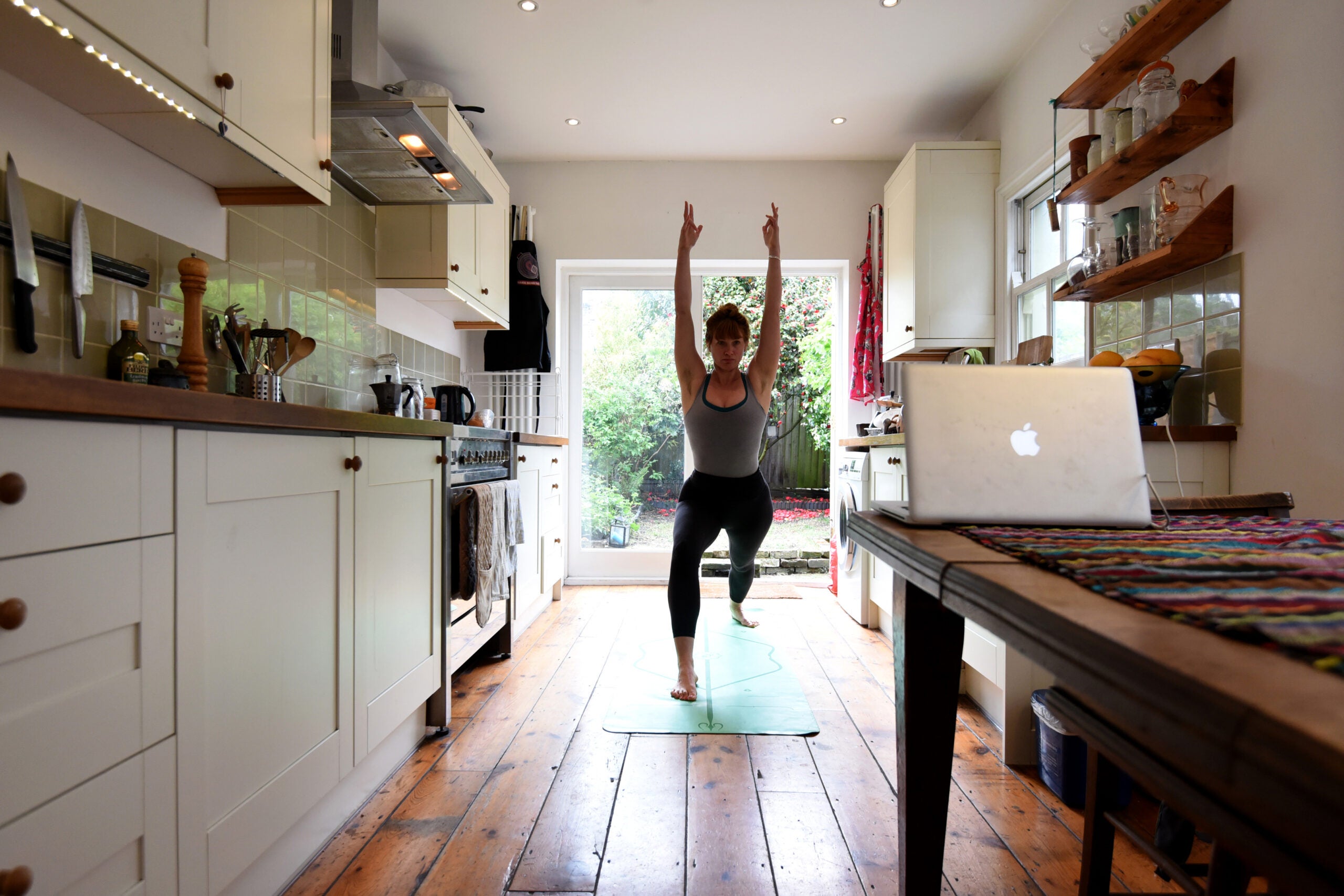
LONDON, ENGLAND - APRIL 30: Jessica the photographers housemate, takes part in an online yoga lesson in her kitchen on April 30, 2020 in London, England. (Photo by Kate Green/Getty Images) (Photo: Kate Green | Getty)
Everyone seems to want strength—and we want it right away. What we overlook in our impatience is the fact that we become stronger from the repeated application of physical stress and effort applied over time. In other words, you won’t become stronger from a single yoga class. Our bodies strengthen in response to repetitive movement and consistency—and even as little as 10 minutes of yoga per day can get you there.
While the regular practice of yoga will bring physical results, what’s even more important is something that cannot be seen: the mental stamina and willpower that comes from showing up for yourself. The mind is the master of the body. The physical poses, or asana, require us to learn how to focus via the breath and be present in the moment with each movement. Cultivating this sort of strength benefits all aspects of life. And it requires patience, practice, consistency, concentration, and a reliable sequence of poses that challenges but doesn’t overwhelm you.
How this yoga sequence develops strength and balance
A consistent and balanced yoga practice enables your body to become even stronger and your mind to remain steady. The following sequence challenges both the body and mind and works as an everyday practice. Here’s how the included poses help us build strength and balance:
Chair, Warrior II Pose, and High Lunge, the standing poses in this sequence, create a foundation in your practice and strengthen the muscles of your legs, glutes, hips, and core. These asana also activate the muladhara (root) chakra, which is your center of balance and grounding.
Plank Pose improves balance, strengthens the whole body, and increases your core strength, willpower, focus, and concentration.
Urdhva Mukha Svanasana (Upward-Facing Dog Pose) is a foundational backbend which strengthens the spinal muscles, core, and glutes and also improves flexibility of the spine.
Utthita Balasana (Extended Child’s Pose) neutralizes the spine after backbends. It also promotes relaxation and activates your ajna (third eye) chakra, the energy center of intuition and mental clarity.
Navasana improves core stability, which supports the spine so you can stand and move with ease in and correct body posture. It also helps you create stamina and willpower.
Bakasana (Crow Pose) is a beautiful arm balance that strengthens the arms and back and increases self-confidence and motivation.
Sirsasana (Headstand) is your inversion for the sequence and it develops strength and balance. Known as the king of all asanas, Sirsasana boosts blood circulation and pranic flow to the brain and teaches us to persevere and maintain balance when in different situations than we are accustomed.
End your practice with Savasana, or as I call it, the master of all asanas, because during this pose, all the teachings of the practice are revealed.
10-minute yoga practice for strength in body and mind
This sequence emphasizes a balance of strength and flexibility, which is something you want to include in each workout. Always warm up your joints prior to beginning your practice. You can start in a seated or standing position and take yourself through some gentle movements of the neck, then move on to the shoulders with some arm rotations, followed by gentle rotations of the ankles and wrists. For the spine, my go-to warm-up is Cat–Cow, which creates a slow approach into flexion and extension of the spine.
And, of course, always focus on your breath to ground yourself and bring balance between the body and mind. Practice each pose for 5 breaths (or 3, if that is more accessible to you). This allows your muscles to develop strength and your mind to become steady.
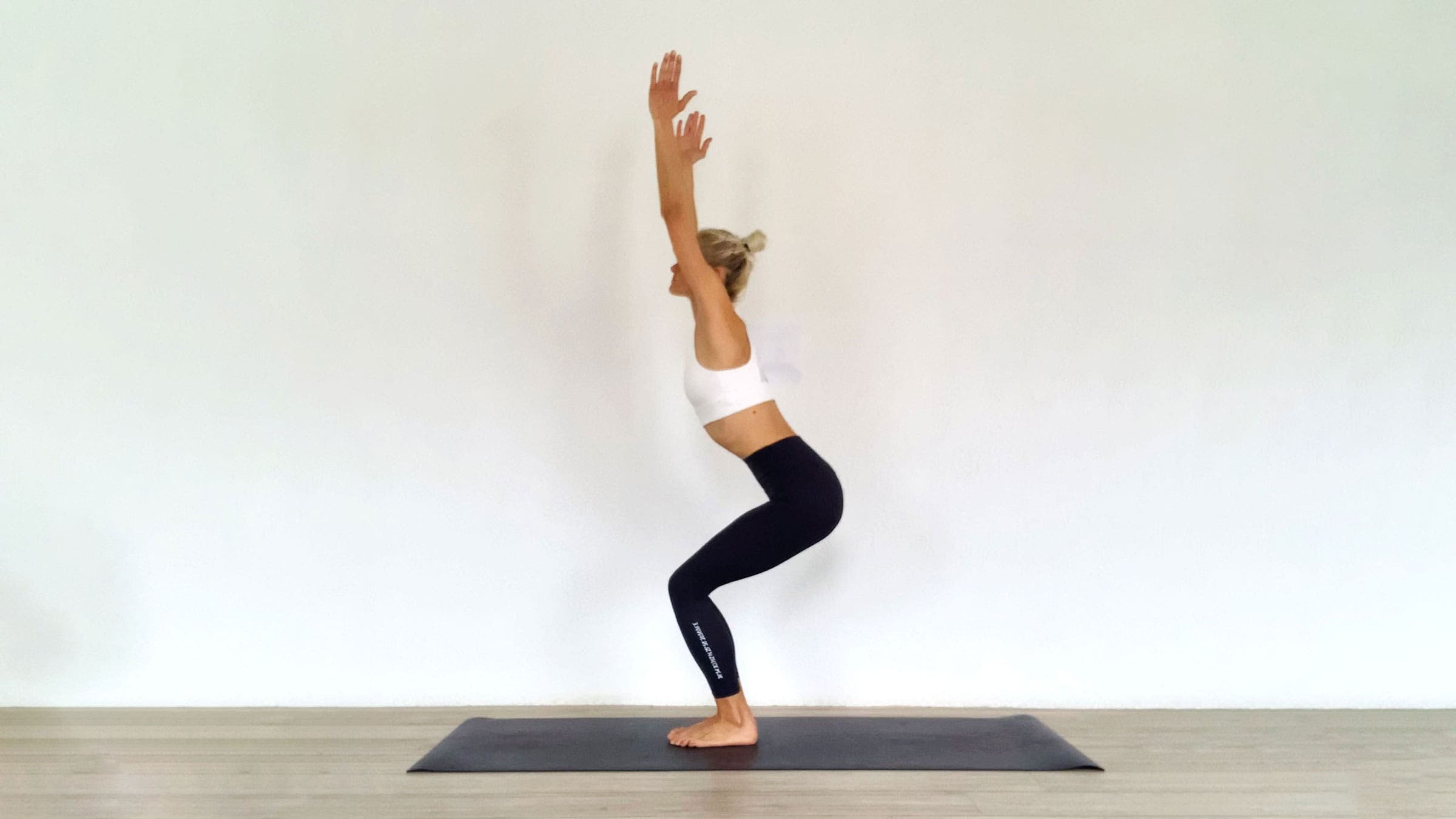
Utkatasana (Chair Pose)
Start in Tadasana (Mountain Pose) at the front of the mat with your big toes either together or slightly apart. Keep your legs active, your shoulders back, and your neck in line with the spinal cord. Inhale and lift your arms above your head, parallel to one another; exhale and bend your knees and lower your buttocks as if you are about to sit on a chair. Keep your knees directly above your toes, your chest open, and your gaze forward or slightly up. Your glutes and legs remain active. If you experience shoulder discomfort, bring your hands to your hips.
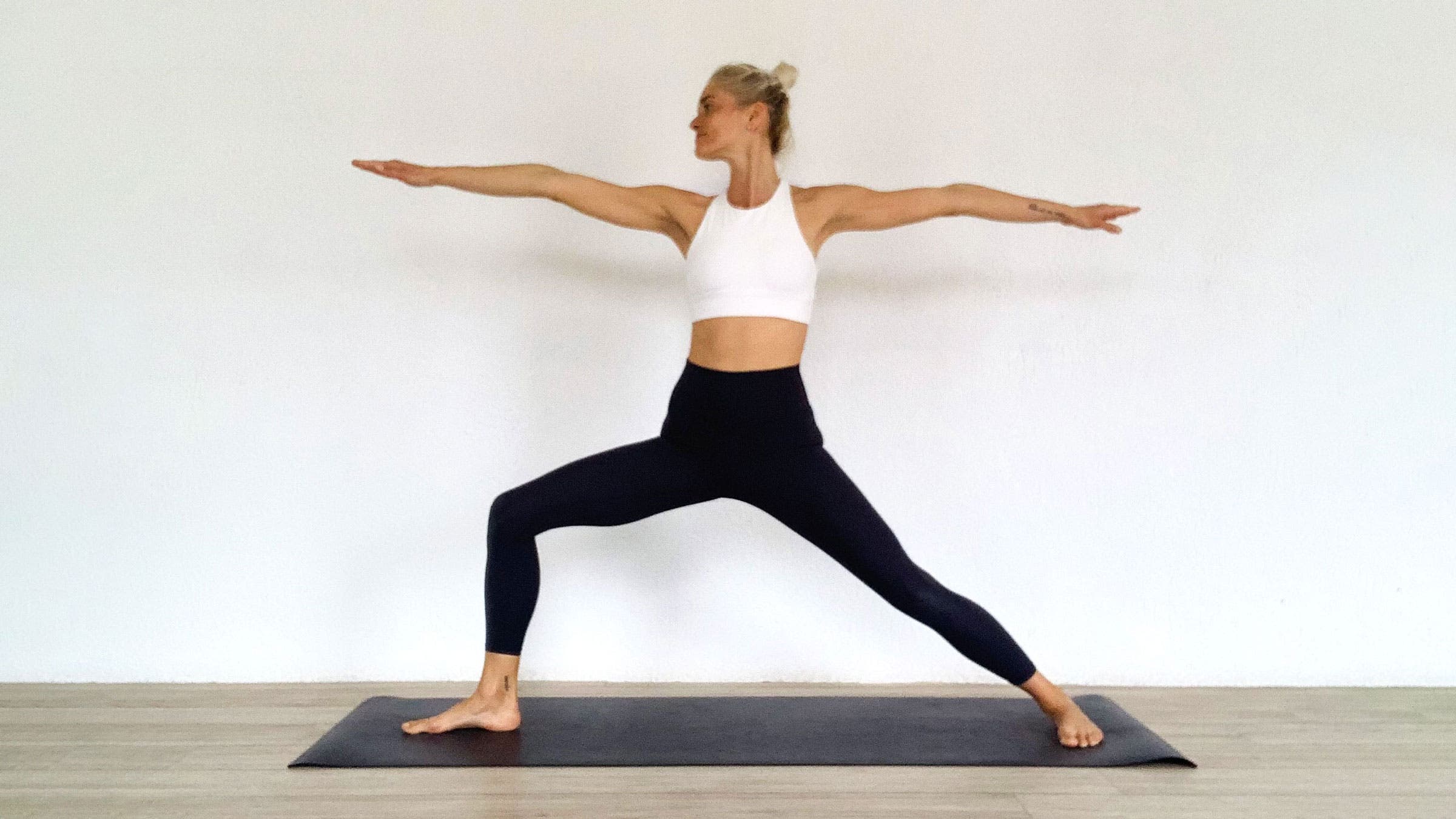
Virabhadrasana II (Warrior II Pose)
From Utkatasana, inhale and step your left foot back so it’s turned slightly in or even parallel to the short side of the mat and open your arms wide and parallel to the mat. Bring your right knee in line with the right ankle and shift your body to face the wide side of the mat, with your hips and pelvis in a neutral position. Bring your shoulders back and down, so that your chest is open. Create length in your arms and keep your shoulders in line with one another. Focus your drishti (gaze) to your right middle finger.
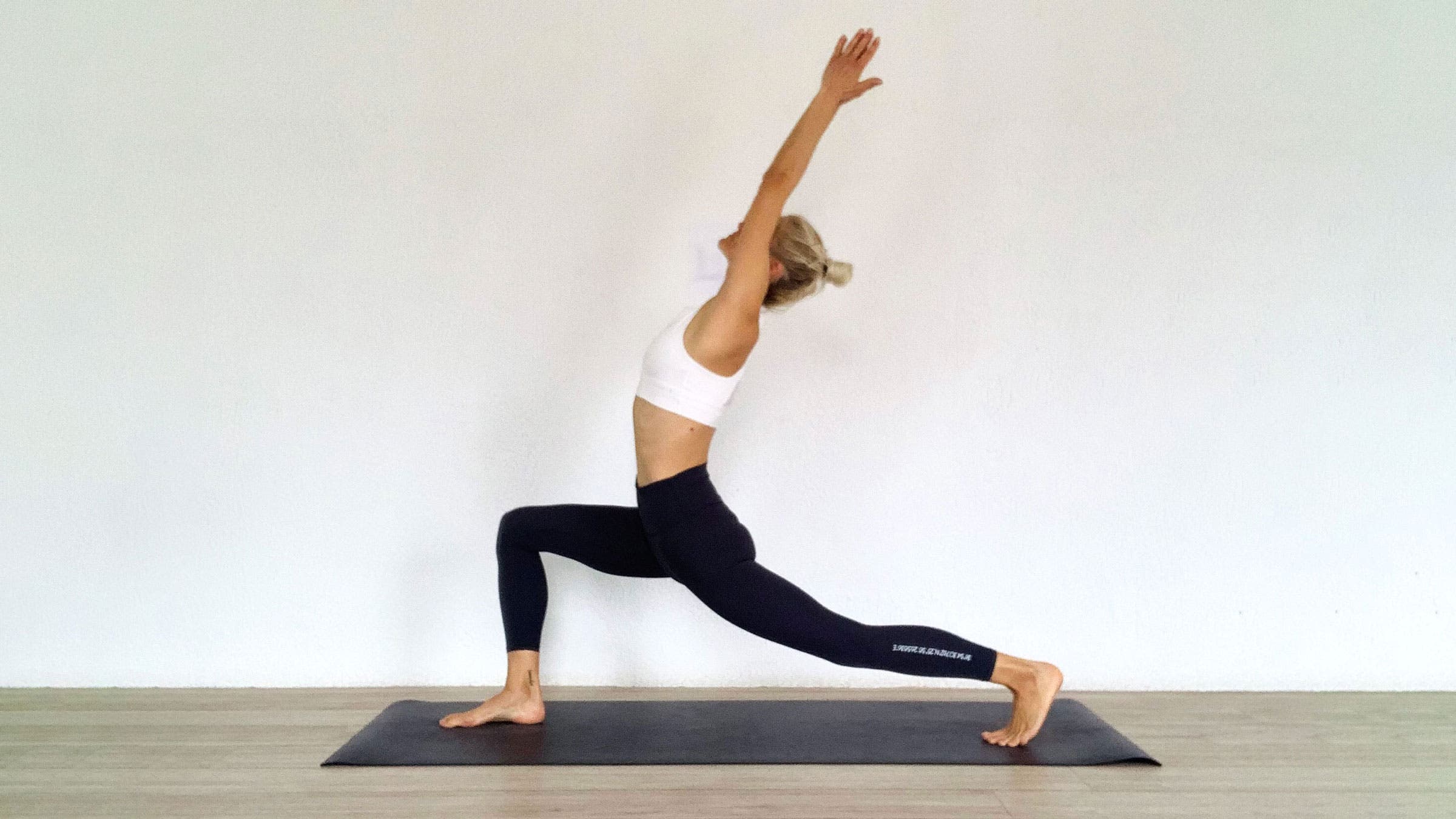
High Lunge
From Warrior II, inhale and come onto your left toes and turn to face the front of the mat as you sweep your arms alongside your ears. Bring your arms shoulder-distance apart or together (option to bring your hands to your hips if you have any shoulder discomfort). As you exhale, maintain balance. Inhale and open your chest as you reach up with your arms; exhale and press your hips forward. If you like, take a slight backbend. Be certain to keep your knee above the ankle as we want to be careful not to place too much pressure on the knee joint. Stay here for 5 deep breaths.
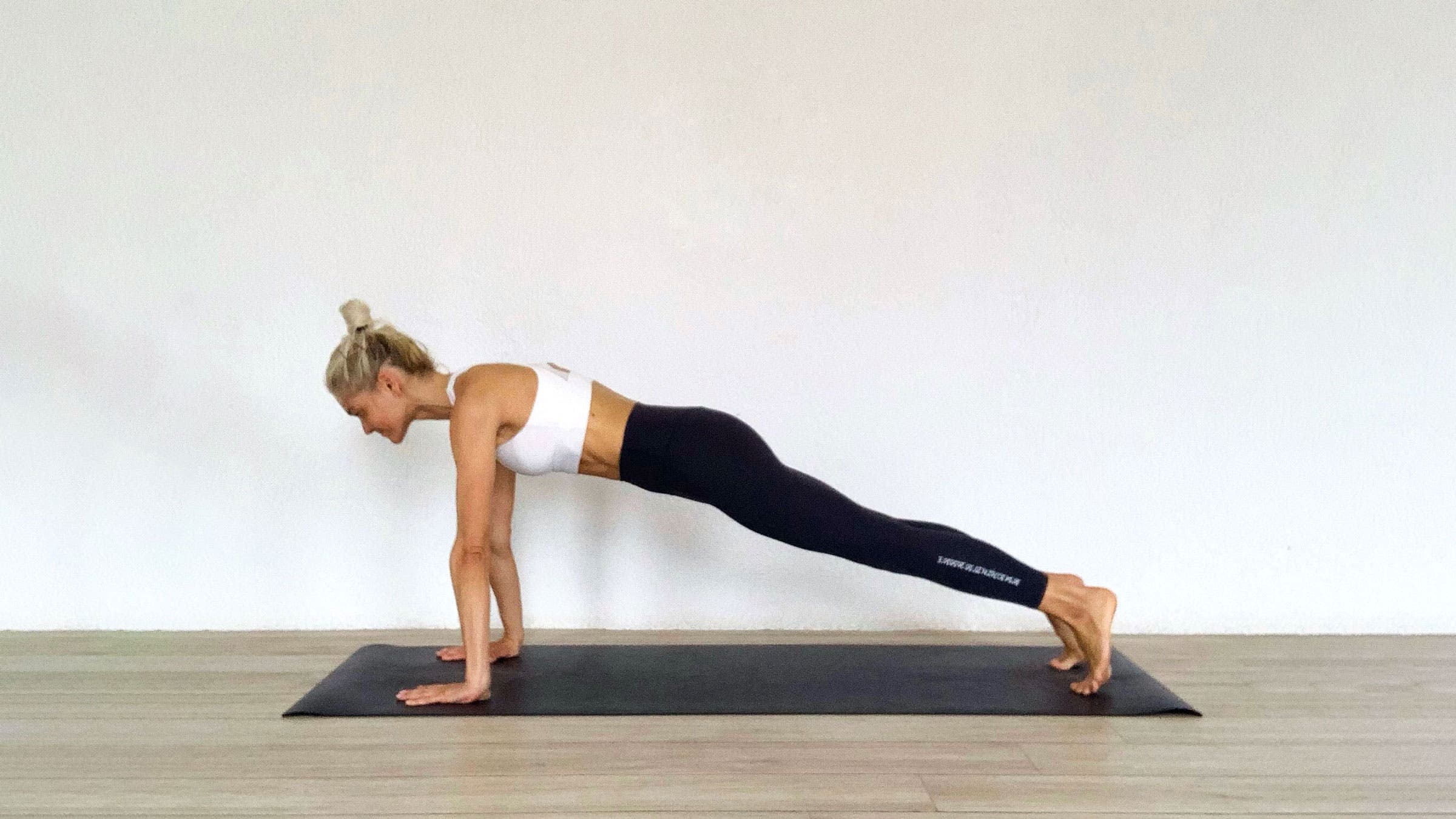
Plank Pose
From High Lunge, inhale and bring both hands to the mat and take your right leg back into Plank Pose. Keep your body in a straight line with your core, legs, and arms active. Gaze down and slightly forward. (Option to bring your knees to the mat for extra support or to come onto your forearms if you experience wrist discomfort.)
From Plank Pose, inhale and bring both feet to the front of the mat and practice Utkatasana, Virabhadrasana II, and High Lunge with your left foot forward. Return to Plank Pose for 7–10 breaths.
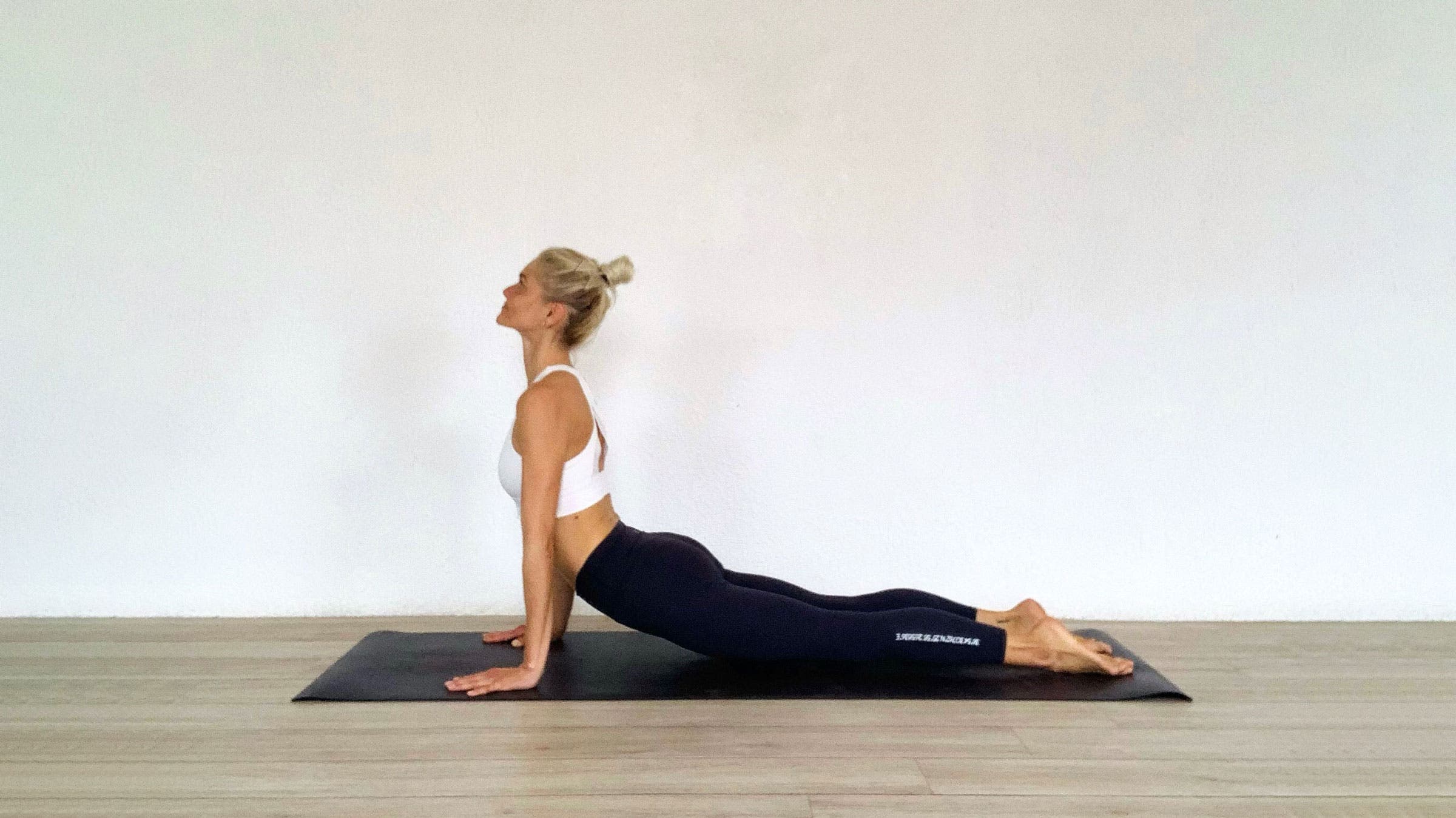
Urdhva Mukha Svanasana (Upward-Facing Dog Pose)
From Plank Pose, bring the top of your feet on the mat, one at a time, press through your palms, open your chest, and lower your hips toward the mat into Urdhva Mukha Svanasana. Keep your shoulders back and your shins, knees, and thighs above the mat. Engage the glutes and core to protect your lower back in this backbend. Look forward or only slightly up to sure that there is no pressure on your neck. As you inhale, open your chest; as you exhale, press your hips toward the mat.
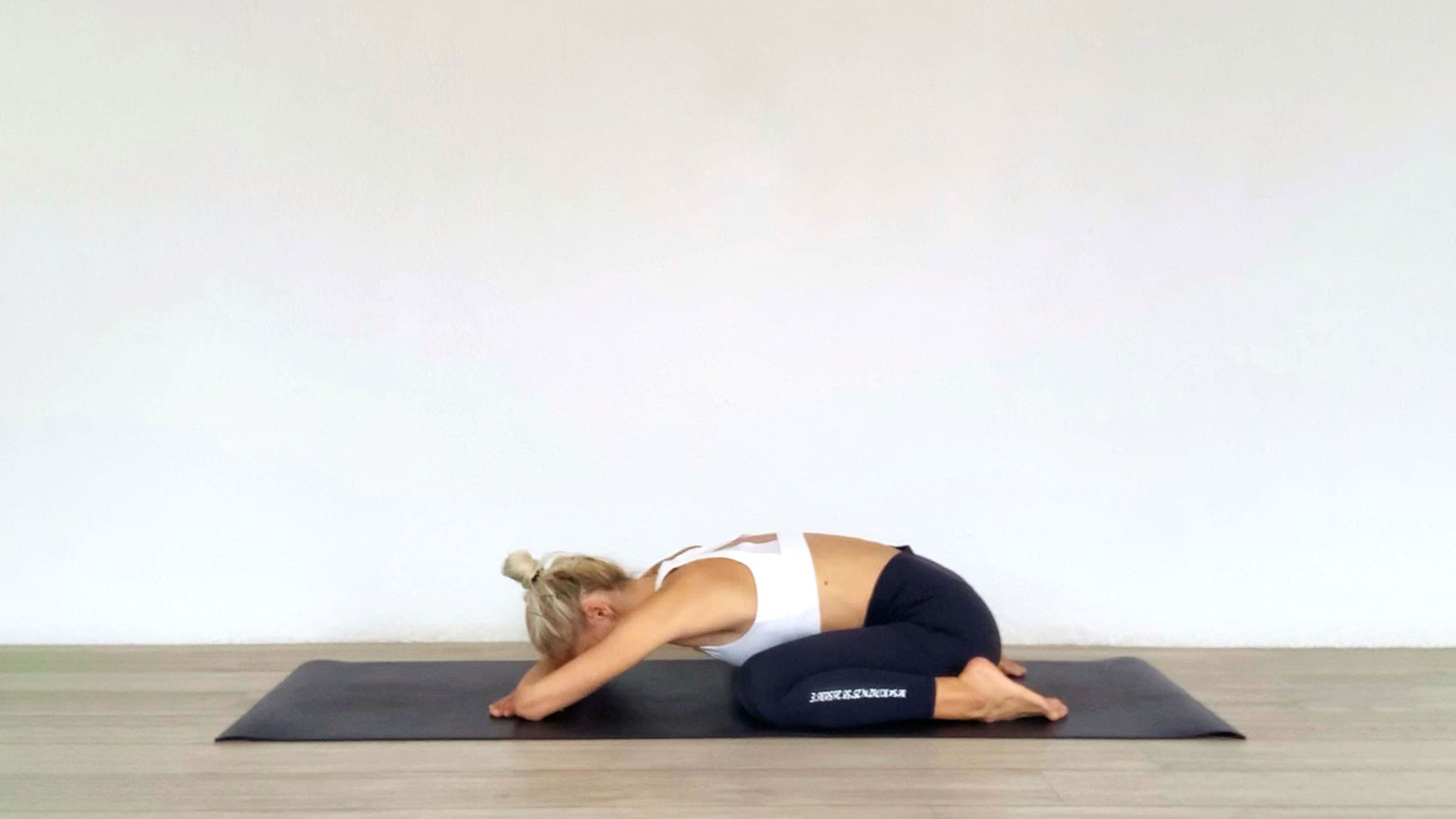
Utthita Balasana (Extended Child’s Pose)
From Upward-Facing Dog Pose, lower your knees to the mat, shift your hips back, slide your knees away from one another, and lower your buttocks toward the mat. Lean your upper body to the mat with your forehead on the mat and your arms straight (option to bend your elbows and stack your forearms on top of each other to rest your forehead). If this doesn’t feel comfortable, place a bolster lengthwise along the center of the mat and rest your buttocks as well as your chest on the bolster.
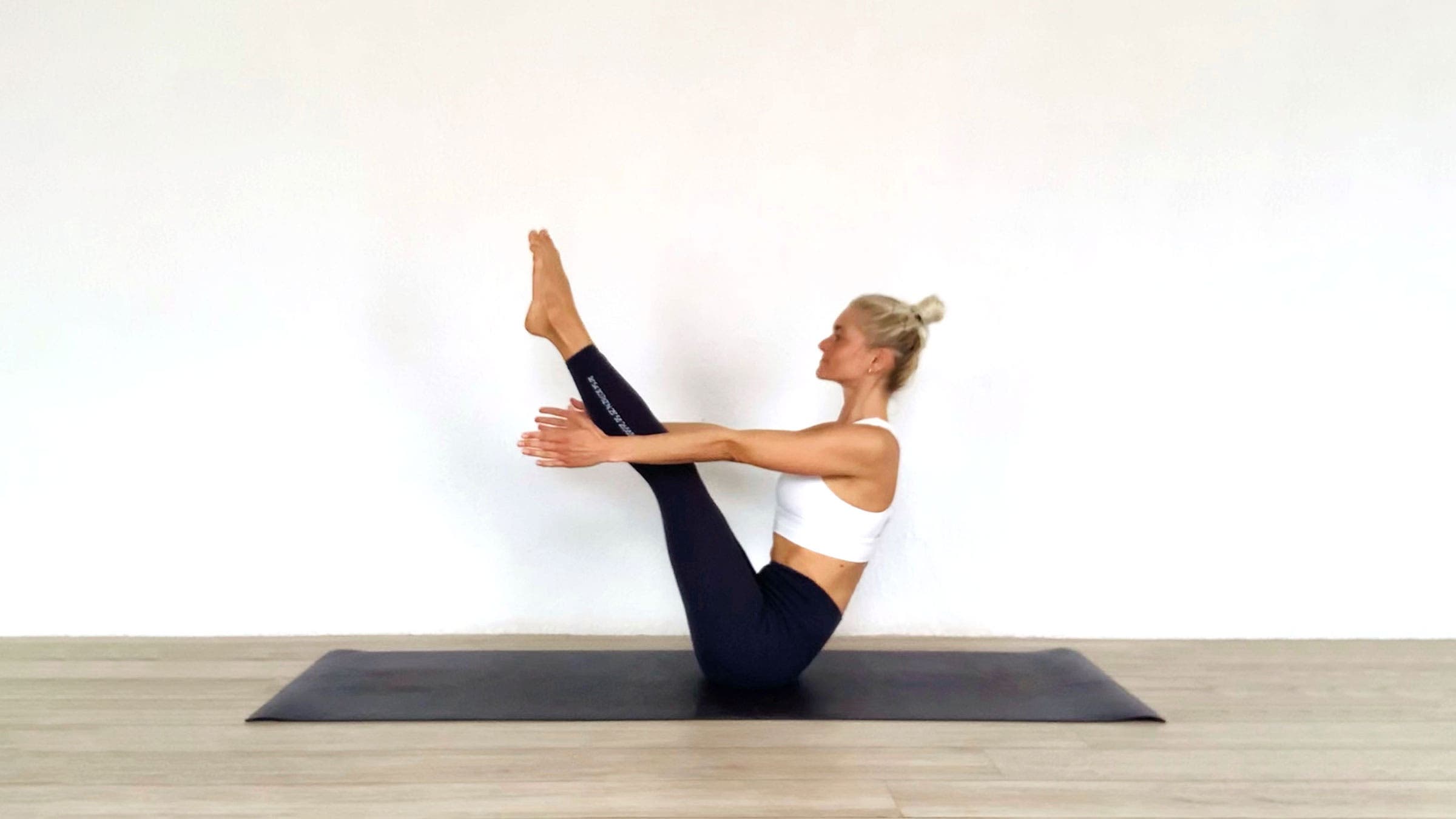
Navasana (Boat Pose)
From Child’s Pose, come into a seated position, inhale, and raise your legs straight and long, pointing your toes. Keep your chest open and your core active as you balance between the tail bone and the sitting bones. Focus your gaze in front of you. Extend your arms forward, parallel to one another. Option to bend your knees or place your fingertips on the mat behind you for extra support.
See also: How to Make Boat Pose Feel Easy
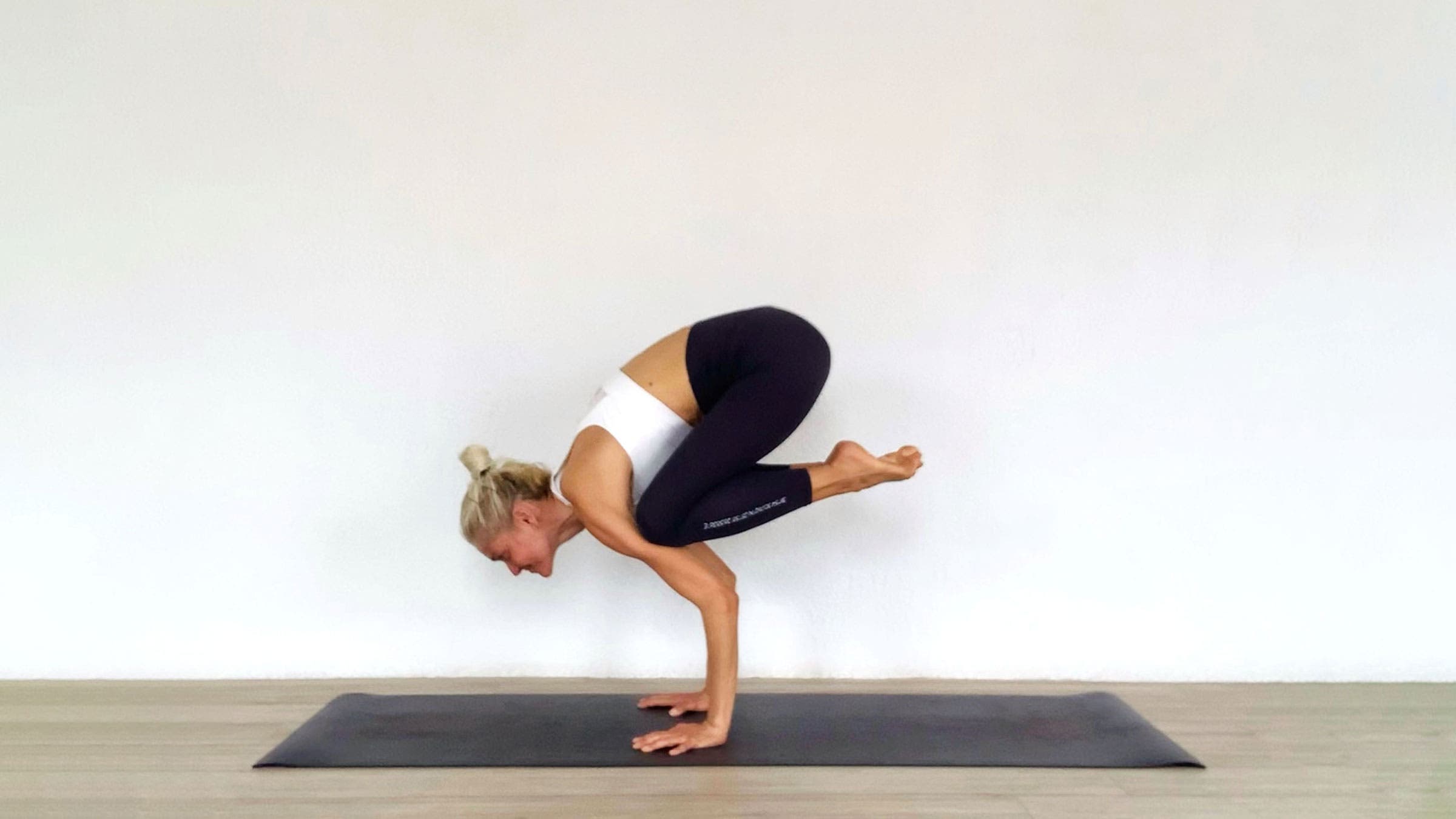
Bakasana or Kakakasa (Crow or Crane Pose)
From Boat Pose, inhale as you bring your feet back onto the mat and come into a squat. Place your palms on the mat in front of your feet, bend your elbows, and bring your knees as close as possible to each armpit. Inhale and lift one foot, pressing your palms firmly on the mat, with your arms and core engaged. Exhale and lift your other foot. If you wish, start to straighten your arms. (Another way to come into this pose is to squat, turn your feet slightly outward, heels facing one another, and then bend your knees and bring them just above your elbows.)
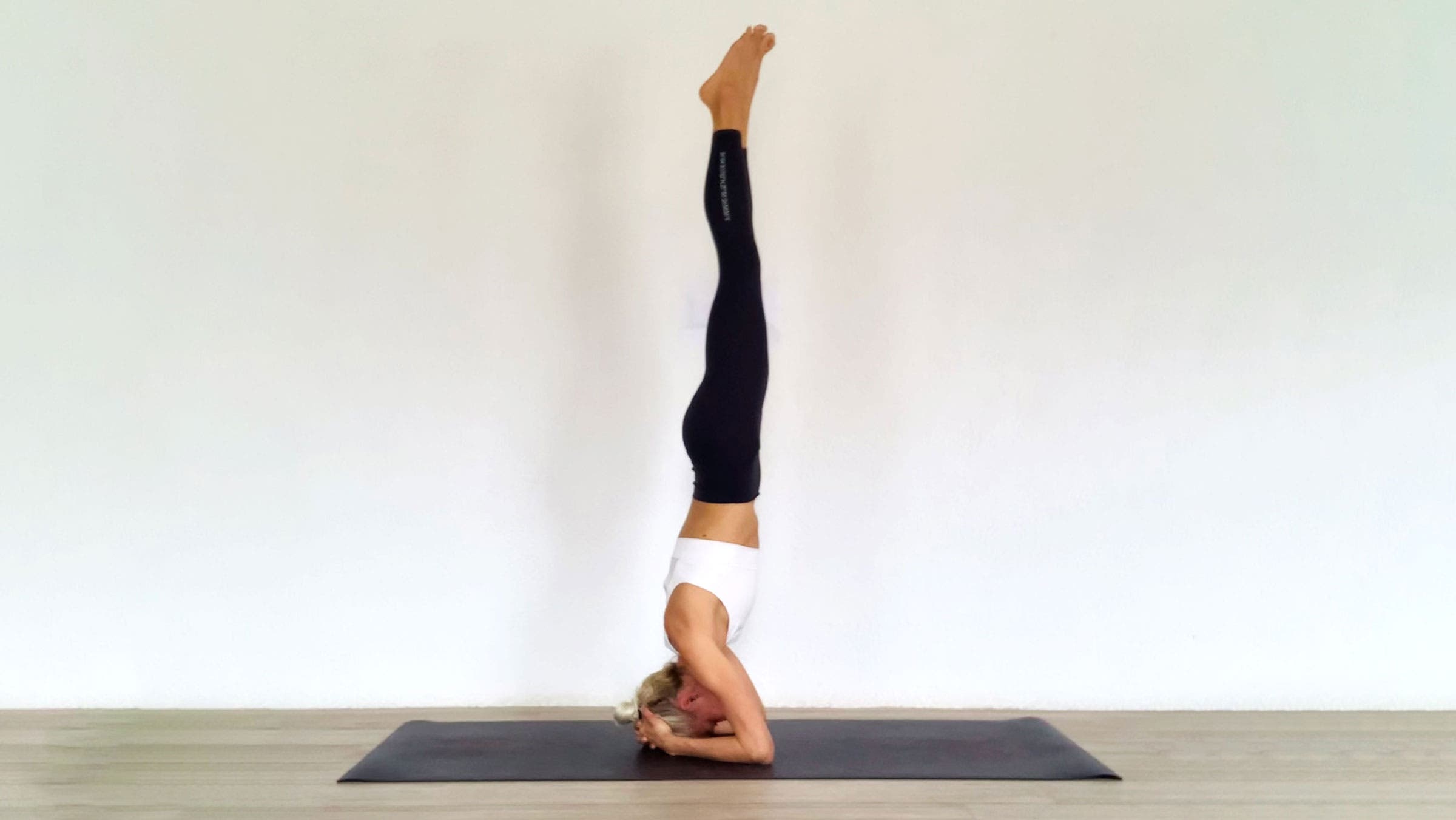
Sirsasana (Headstand)
From Crow Pose, you can go straight to Mukta Hasta Sirsasana (Tripod Headstand) by leaning forward and bringing the crown of the head on the mat if it is part of your practice. Otherwise, come into a Tabletop position and prepare for Sirsasana. Bring your forearms on the mat and your hands to the opposite triceps, then maintain that distance between the elbows and bring your hands to the center of the mat and bind your hands, interlacing your fingers. Place your head in the palms, just above the crown of the head. Straighten your legs and begin to slowly tiptoe your feet toward the front of the body, pressing through your forearms. When you feel that your hips are above your shoulders, bend one knee and raise it halfway, then do so with the other. Keep your core strong and activate the mula bandha (root lock). When you are ready, extend both legs into a full headstand.
Slowly come down and, as always, practice Balasana after Sirsasana.
Come into a prone position and make yourself comfortable for Savasana. Stay here for at least a minute—or longer if you have the time. Relax your body, free your mind, and enjoy the silence.
About our contributor
Miriam Indries is a 500-hour-plus yoga teacher and YTT trainer. With a vast experience of teaching asana and meditation as well as yoga teacher trainings, she is devoted to her mission and service of sharing yoga philosophy around the world through her teachings. She spent time in India studying yoga philosophy and advanced asana practice. Miriam is also an Ayurveda Practitioner, Pilates instructor and fitness enthusiast. Additionally, she has academic qualifications in Psychology (B.A) and NLP (neuro-linguistic programming) with an emphasis on behavior, effective goal setting, and strategies for self-development. Her love for learning also led her to studies in Traditional Chinese Medicine, body language, and reflexology and she continues to remain a student of life. She currently teaches at Aegialis School of Yoga in Greece as the creator and lead teacher of the YTTs.
About our contributor
Miriam Indries is a certified 500-plus hours yoga teacher and YTT trainer. With a vast experience of teaching asana and meditation, she is dedicated to her mission and service of sharing yoga philosophy around the world. She has studied yoga philosophy and advanced asana practice in India and is a published author as well as practitioner of Ayurveda, the sister science of yoga. She is also a Pilates Instructor and fitness enthusiast. Additionally, she has academic qualifications in Psychology (B.A) and NLP (neuro-linguistic programming), focusing on behavior, effective goal-setting, and strategies for self-development. Her love for learning also led her to studies in Chinese medicine, body language, and reflexology and she continues to remain open to being a student of life. She is currently the creator and lead trainer for the yoga teacher training at Aegialis School of Yoga in Greece.